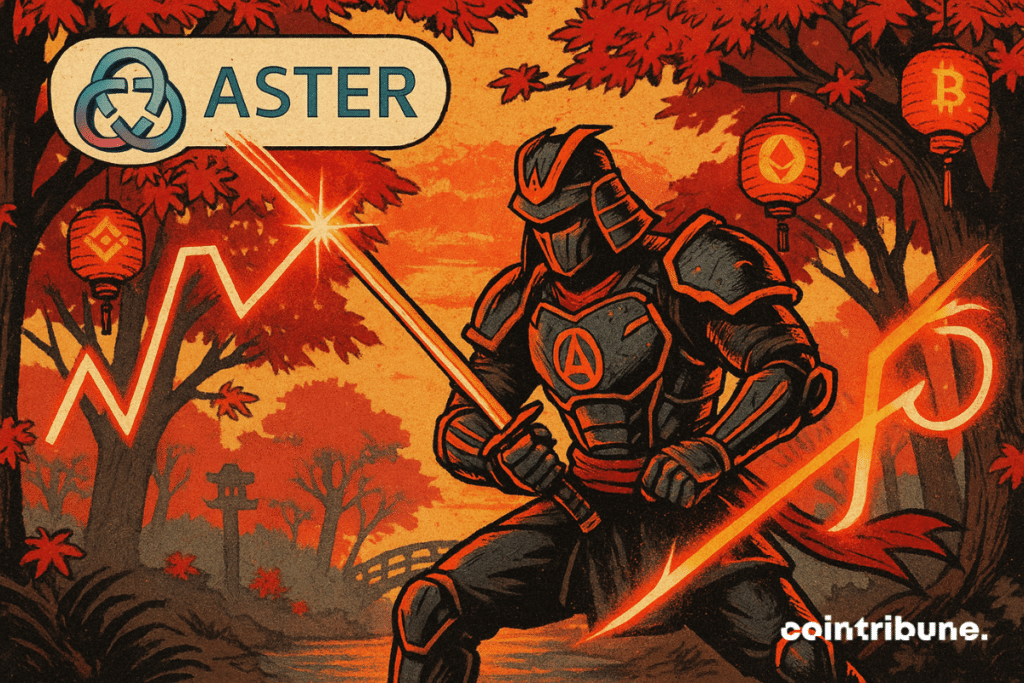Aster’s DEX Revolution: How Crypto Derivatives Just Got Disrupted
Aster just dropped a bomb on the derivatives market—and traditional finance didn't see it coming.
Decentralized Power Grab
Their new DEX cuts out the middlemen that have dominated derivatives trading for decades. No more waiting for broker approvals or worrying about exchange hacks. The protocol bypasses centralized choke points entirely—putting control back in traders' hands where it belongs.
Liquidity Meets Automation
Automated market makers execute complex derivatives positions faster than any human-led exchange. The system matches orders peer-to-peer while maintaining full transparency—something Wall Street's dark pools would never allow. Smart contracts handle settlements instantly, eliminating counterparty risk that plagues traditional markets.
Regulatory End-Run
By operating on-chain, Aster's platform sidesteps jurisdictional debates that have stalled crypto derivatives adoption. The code is the law—no need for regulatory approval that typically takes years. Though let's be honest—the SEC will still find a way to complain about something they don't understand.
The derivatives market won't know what hit it. Traditional finance keeps building taller towers while crypto's digging tunnels underneath—and Aster just handed everyone shovels. Another reminder that in the race between innovation and regulation, technology always wins. Even if the suits won't admit it until their Bloomberg terminals start showing outdated prices.
 Read us on Google News
Read us on Google News
In brief
- Aster surpasses 36 billion dollars in volume in a single day on its DEX.
- The crypto ecosystem stirs, between generous incentives and suspicions of hidden centralization.
- Changpeng Zhao, ex-Binance, actively supports the project via his YZi Labs fund.
- 96% of ASTER tokens are reportedly controlled by six wallets, according to on-chain analysts.
Aster, an outsider treading on Hyperliquid’s turf
Aster, having recently shown a 480% jump, makes a smashing entrance with a volume of 1.9 billion dollars. Five days later, it records 36 billion. This spectacular growth is no accident. Aster combines perpetual offers, spot trading, tokenized stocks, and community bonuses.
Its launch rests on an effective gamification strategy. Users earn points through trading activities, with the promise of an ASTER airdrop. Result: traders flock in mass. In parallel, its interface in two modes (Simple and Pro) appeals both to novices and crypto market veterans.
In a widely noted tweet, user @hansolar21 issues a clear warning: “This looks like the 2018 fee-mining season. It never ends well for retail.”
But despite warnings, the momentum is too strong. Aster surpasses Hyperliquid in daily volume and revenue, with 9.2M$ in 24 hours.
“Decentralized,” really? When Binance stays in ambush
Behind Aster’s explosion, one name resurfaces: Changpeng Zhao (CZ), ex-boss of Binance. Although ousted from his platform after an agreement with U.S. authorities, CZ continues to act via YZi Labs, the fund behind Aster. This link, far from trivial, fuels doubts about the project’s real independence.
His support is explicit. On X, he tweets: “Well played! Good start. Keep building! “
The message is clear: Binance remains omnipresent in the crypto ecosystem, even through entities claimed to be “independent.”
Aster benefits from this legitimacy lever. Its token ASTER, launched at $0.090, reaches a peak of $2.30 in less than a week. Its market cap jumps to $3.7 billion. But some warn about dangerous concentration: according to analyst @cyclop, 96% of the token is controlled by six wallets, questioning the decentralization promise.
Behind the numbers: the inside story of a crypto tidal wave
Aster’s success is not just a flash in the pan. It is based on solid data that should be deciphered. Its progress is paced by spectacular peaks but also a well-oiled strategy combining yield, tokenomics, and community growth.
Numbers and facts to remember:
- On September 20, 2025, perpetual DEXs accumulated 70 billion dollars in volume, a historical record;
- Aster accounted for more than 50% of this volume alone;
- The protocol’s open interest climbed to 1.25 billion dollars;
- The TVL doubled in one week, reaching 2 billion dollars;
- The ASTER token rose by 2,400% between September 18 and 24.
But not everyone is convinced. “Flow is not conviction, these are incentives,” warns @tikooww.
This mixture of incentives and HYPE could quickly collapse if rewards dwindle.
Hyperliquid is not standing idle. Despite Aster’s breakthrough, it just set a global record: 102.4 million dollars in revenue per employee. With only 11 contributors, it redefines efficiency standards. The Aster-Hyperliquid duel is therefore far from over. And the crypto market, more unpredictable than ever, may still offer a few twists.
Maximize your Cointribune experience with our "Read to Earn" program! For every article you read, earn points and access exclusive rewards. Sign up now and start earning benefits.

